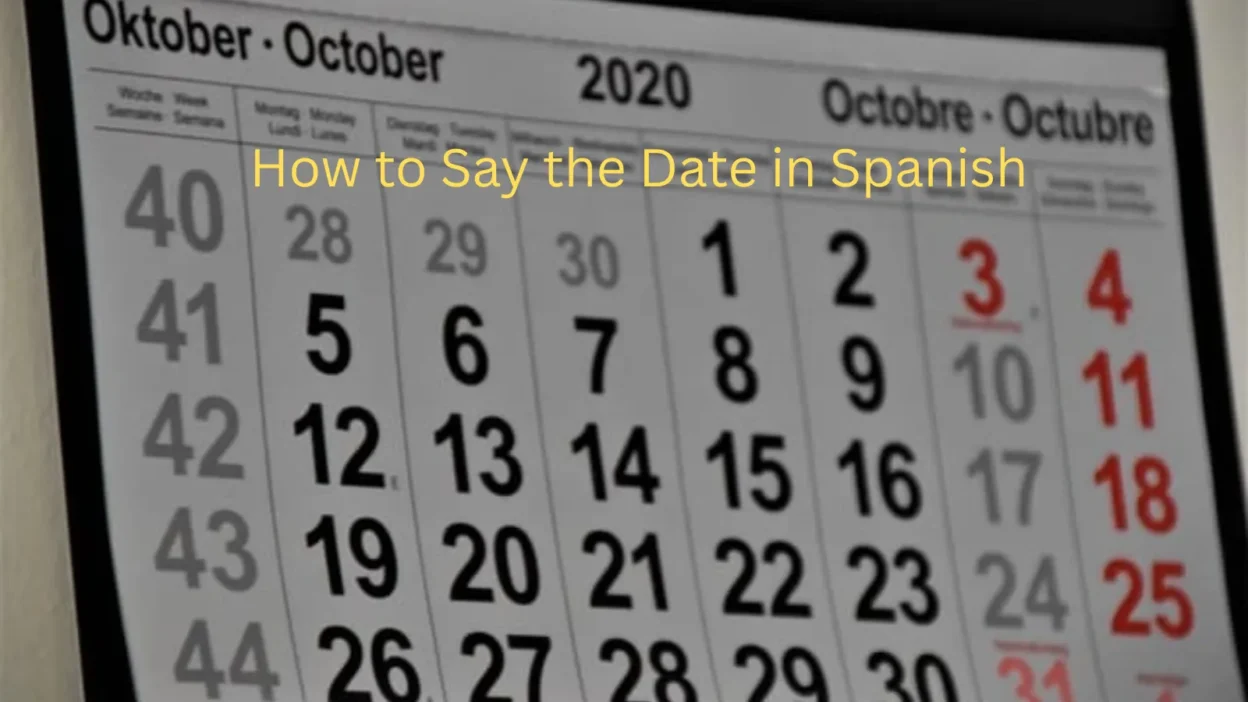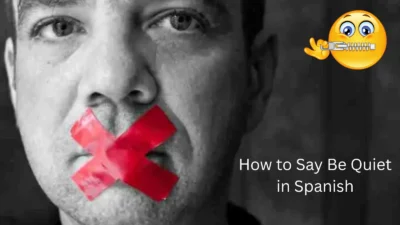📅 How to Say the Date in Spanish is an essential skill for everyday conversations, travel, and formal situations. In Spanish, dates follow a different structure than in English, and learning the right format will help you sound natural and confident.
Whether you’re planning an event, filling out a form, or just chatting with friends, knowing how to say the date in Spanish will make communication smoother and more accurate.
From days of the week to months of the year, mastering this will also boost your overall Spanish fluency. With a little practice, you’ll be able to say and understand any date without hesitation..
Say the Date in Spanish
Let’s explore 15 practical ways to say the date in Spanish, complete with dialogue examples and where or how they’re typically used!
🗓️ 15 Ways to Say the Date in Spanish
| No. | Spanish Phrase | Meaning / Use |
|---|---|---|
| 1 | ¿Qué fecha es hoy? | What’s the date today? |
| 2 | Hoy es… | Today is… |
| 3 | Mañana es… | Tomorrow is… |
| 4 | Ayer fue… | Yesterday was… |
| 5 | 12 de noviembre de 2025 | Example of full date (day + month + year) |
| 6 | Miércoles, 12 de noviembre | Day + date |
| 7 | el doce de noviembre | Ordinal way: the twelfth of November |
| 8 | ¿Cuál es tu fecha de nacimiento? | What is your birth date? |
| 9 | Mi cumpleaños es el… | My birthday is on… |
| 10 | Hoy es lunes | Today is Monday |
| 11 | El lunes, 12 de noviembre | Specific day + date |
| 12 | Fecha límite: 20 de diciembre | Deadline: December 20 |
| 13 | La fecha de entrega es… | The due date is… |
| 14 | Hoy es el primer día del mes | Today is the first day of the month |
| 15 | Hoy es el último día del mes | Today is the last day of the month |
1. Hoy es [day] [number] de [month] de [year]
(Today is [day] [number] of [month] of [year])
Example:
👤 User A: ¿Qué día es hoy?
👤 User B: Hoy es lunes 3 de junio de 2025.
Context:
This is the standard and most complete way to say the date in Spanish, used in formal writing, news, and schools.
2. Es el [number] de [month]
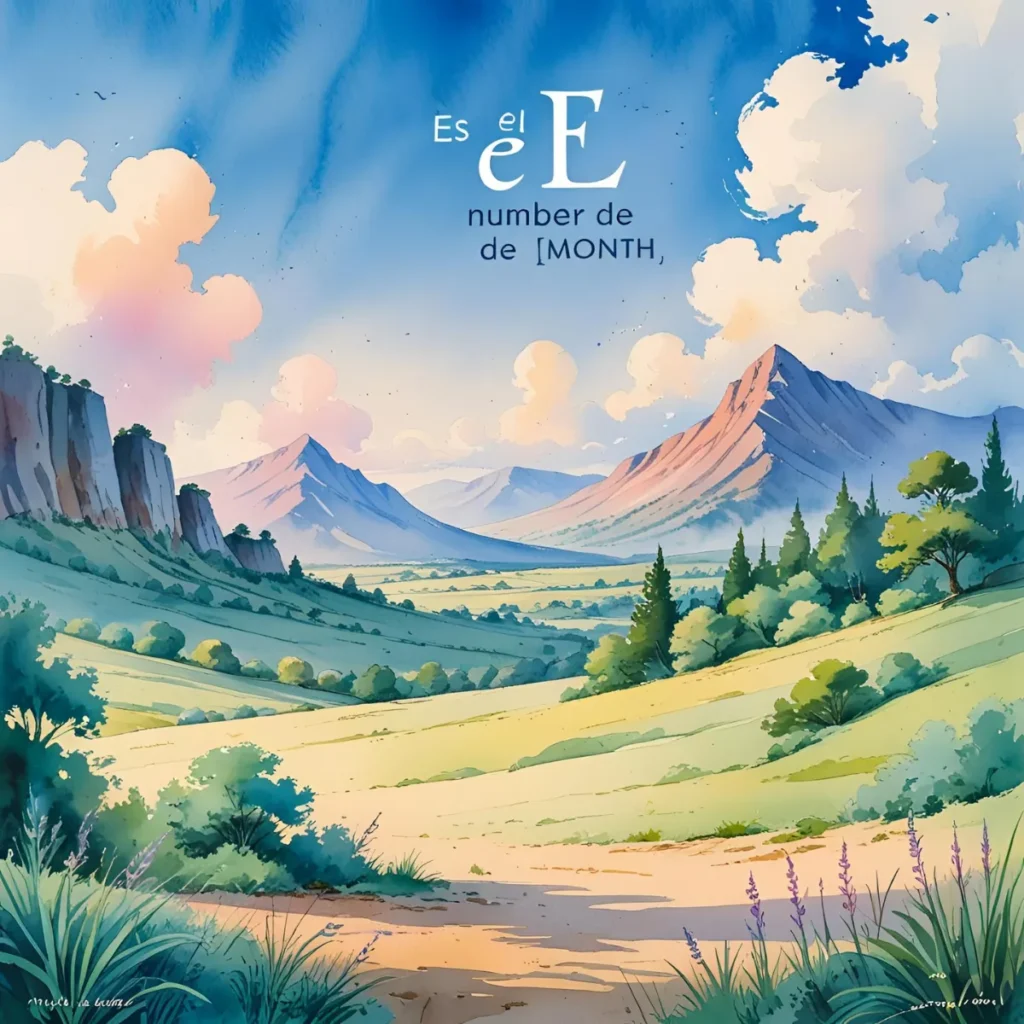
(It’s the [number] of [month])
Example:
👤 User A: ¿Cuándo es tu cumpleaños?
👤 User B: Es el 15 de abril.
Context:
A more casual and common way to state just the day and month—often used when the year is obvious or not needed.
3. Estamos a [number] de [month]
(We are at the [number] of [month])
Example:
👤 User A: ¿A cuántos estamos?
👤 User B: Estamos a 22 de octubre.
Context:
Used mostly in spoken, informal Spanish. Very popular in Spain and Latin America when talking about the current date.
4. La fecha de hoy es [full date]
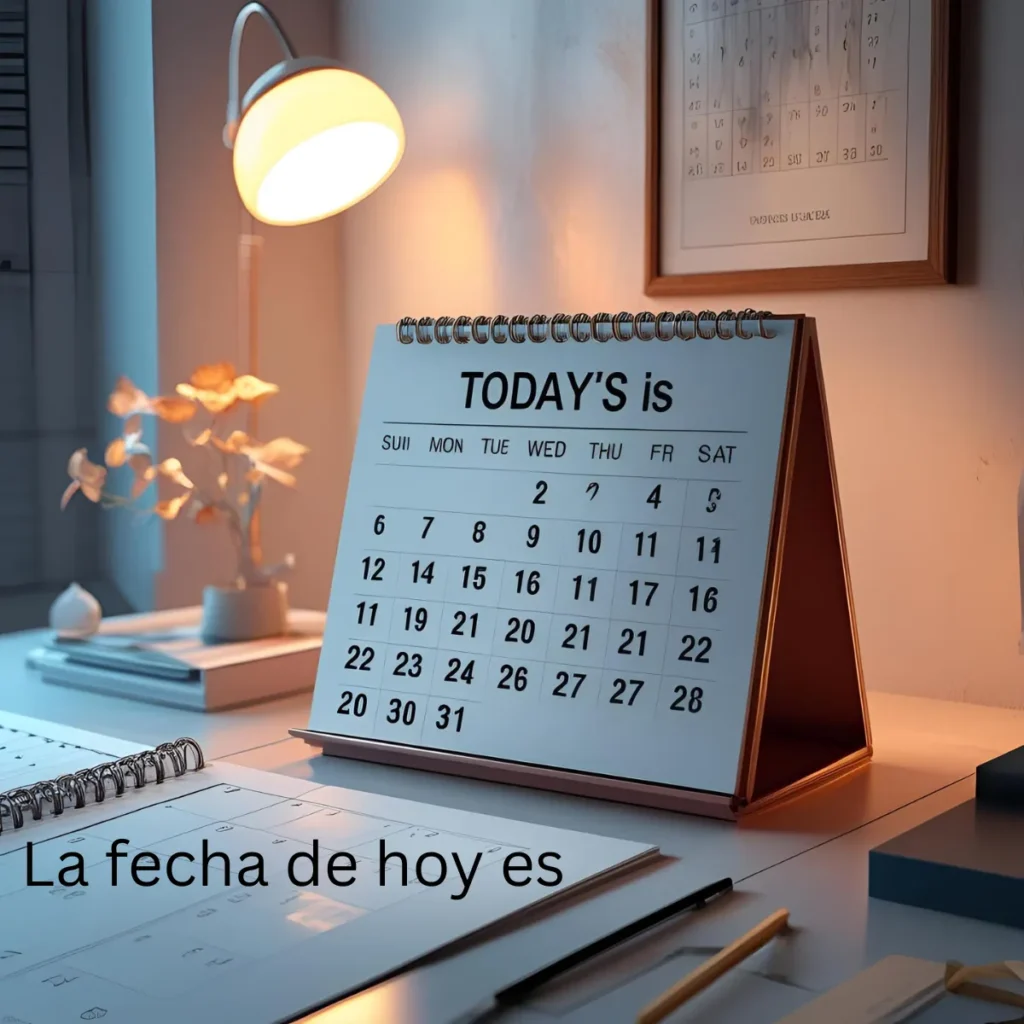
(Today’s date is [full date])
Example:
👤 User A: ¿Cuál es la fecha de hoy para el formulario?
👤 User B: La fecha de hoy es 6 de marzo de 2025.
Context:
Formal use, often in documents, applications, or business communication.
5. Hoy estamos a [day of the week], [number] de [month]
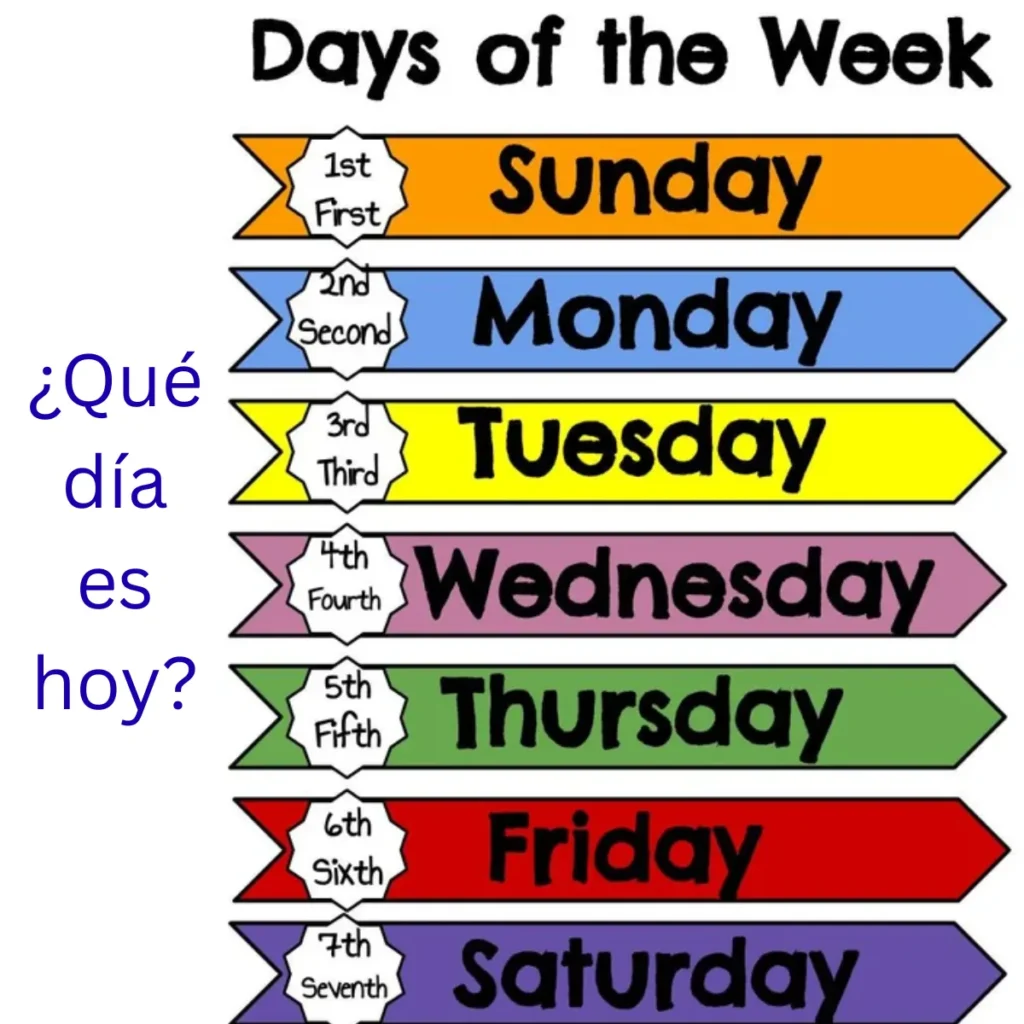
(Today is [weekday], [number] of [month])
Example:
👤 User A: ¿Qué día es hoy?
👤 User B: Hoy estamos a jueves, 11 de enero.
Context:
Casual conversation, especially when someone wants to include the day of the week.
6. Hoy es el primer día de [month]
(Today is the first day of [month])
Example:
👤 User A: ¿Cuándo comienza el mes?
👤 User B: Hoy es el primer día de septiembre.
Context:
Used when emphasizing the beginning of a new month—useful in announcements, reports, or reflections.
7. Mi cumpleaños es el [number] de [month]
(My birthday is the [number] of [month])
Example:
👤 User A: ¿Cuándo es tu cumpleaños?
👤 User B: Es el 8 de diciembre.
Context:
Common in everyday conversation; a personal way to state a date related to events or anniversaries.
8. Hoy es [weekday]
(Today is [day of the week])
Example:
👤 User A: ¿Qué día es hoy?
👤 User B: Hoy es martes.
Context:
Not the full date, but often used alone in casual conversations to answer what day it is.
9. ¿Qué día es hoy? / ¿A cuántos estamos?
(What day is today? / What’s today’s date?)
Example:
👤 User A: ¿A cuántos estamos hoy?
👤 User B: A 19 de mayo.
Context:
A very natural question form used all over the Spanish-speaking world. The response often omits the full year.
10. Hoy es el día de…
(Today is the day of…)
Example:
👤 User A: Hoy es el día de los enamorados.
👤 User B: ¡Feliz San Valentín!
Context:
Used when referring to holidays or special occasions, like “El Día del Padre” (Father’s Day).
11. Es [day], el [number] de [month]
(It’s [weekday], the [number] of [month])
Example:
👤 User A: ¿Sabes la fecha de hoy?
👤 User B: Es viernes, el 10 de noviembre.
Context:
Very commonly spoken form when people want to include both weekday and date but in a less formal tone.
12. Hoy ya es [number] de [month]
(It’s already the [number] of [month])
Example:
👤 User A: ¡No puedo creerlo!
👤 User B: Hoy ya es 25 de diciembre… ¡Navidad!
Context:
Used to express surprise or reflection on how quickly time has passed.
13. La fecha de nacimiento es el [number] de [month] de [year]
(The date of birth is the [number] of [month] of [year])
Example:
👤 User A: ¿Cuál es tu fecha de nacimiento?
👤 User B: El 30 de agosto de 1992.
Context:
Used in official forms, identification documents, or medical records.
14. El evento será el [number] de [month]
(The event will be on the [number] of [month])
Example:
👤 User A: ¿Cuándo es la conferencia?
👤 User B: El evento será el 17 de julio.
Context:
Used in future references—announcing dates for plans, events, or meetings.
15. Faltan [number] días para el [date]
(There are [number] days left until [date])
Example:
👤 User A: ¿Cuánto falta para Año Nuevo?
👤 User B: Faltan 3 días para el 1 de enero.
Context:
Helpful for countdowns, common in both casual and festive contexts.
FAQs
- How do you ask “What’s the date?” in Spanish?
Say “¿Qué fecha es hoy?” — it means What is the date today? - How do you say a specific date in Spanish?
Use the format day + de + month + de + year. Example: 12 de noviembre de 2025. - How do you pronounce dates in Spanish?
Example: 12 de noviembre de 2025 — doce de no-viem-bre de dos mil veinticinco. - Is there a short way to say the date?
Yes, you can use numbers: 12/11/2025 (day/month/year). - How do you say “Today is…” in Spanish?
Say “Hoy es…” followed by the date. Example: Hoy es 12 de noviembre de 2025. - How do you say the day of the week with the date?
Include the day first: Miércoles, 12 de noviembre de 2025 — Wednesday, November 12, 2025. - How do you say “Tomorrow’s date” in Spanish?
Say “Mañana es…” followed by the date. - How do you ask for someone’s birthday date in Spanish?
Say “¿Cuál es tu fecha de nacimiento?” — What is your birth date? - Do Spanish speakers use months in lowercase or uppercase?
Months are always lowercase in Spanish. Example: enero, febrero, marzo. - Can I use ordinal numbers for dates?
Yes, sometimes in spoken Spanish you can say: el doce de noviembre — the twelfth of November.
Conclusion:
Now that you know how to say the date in Spanish, you can confidently share and understand dates in any context — from casual chats to formal documents. This skill not only improves your fluency but also helps you connect more naturally with Spanish speakers. Keep practicing, and soon saying the date will feel as easy as telling the time.
